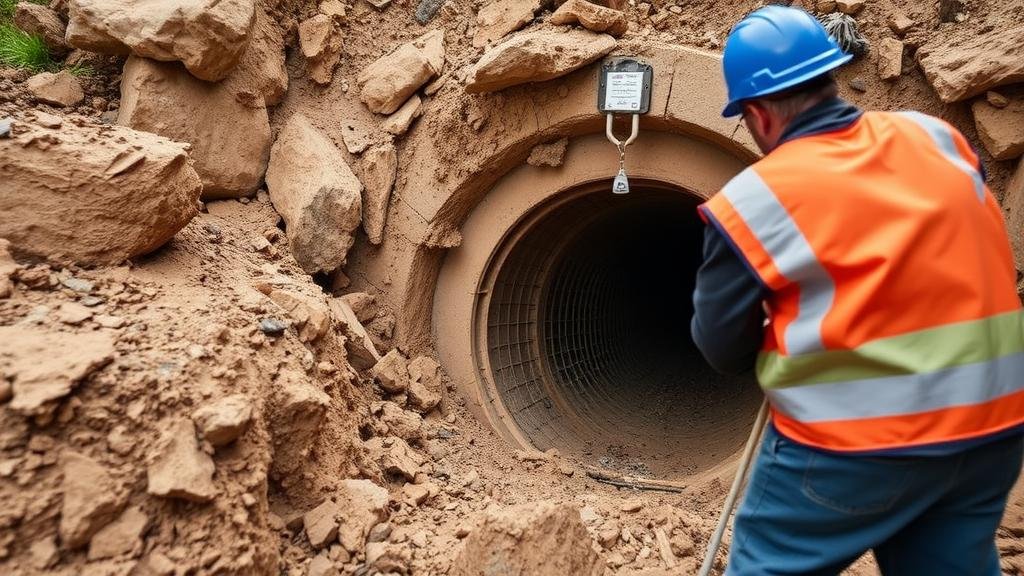How to Create Safe Access Points When Digging a Tunnel
How to Create Safe Access Points When Digging a Tunnel
Creating safe access points while digging a tunnel is crucial for the protection of workers, equipment, and the structural integrity of the tunnel itself. This article explores effective strategies, industry standards, and real-world applications that ensure safety and efficiency during tunnel excavation projects.
Understanding Access Points
Access points are openings that allow for entry and exit into a tunnel. They can serve multiple purposes, including access for workers, machinery, and materials. Safe access points help mitigate the risks associated with tunnel construction, such as cave-ins, flooding, and equipment accidents.
Types of Access Points
There are several types of access points that can be utilized in tunnel digging. Each has its advantages and disadvantages, depending on the specific project requirements.
- Vertical Shafts: Typically used for deep tunnels, vertical shafts facilitate direct entry from the surface into the tunnel.
- Ramps: Gradually sloped access points allow for the movement of personnel and equipment. They are particularly effective in soft soil conditions.
- Horizontal Boreholes: These access points are drilled into the earth to provide safety access through small openings, often used for exploratory work.
Site Assessment and Planning
Before establishing access points, a thorough site assessment is essential. This involves evaluating soil conditions, rock formations, potential hazards, and existing infrastructures.
- Soil Testing: Conduct geotechnical investigations to determine the soils load-bearing capacity and to identify potential for collapse.
- Environmental Assessments: Evaluate the area for risks such as flooding, gas emissions, and wildlife encounters.
Planning should involve input from geologists, engineers, and safety professionals to develop a comprehensive strategy that adheres to industry regulations. According to the Occupational Safety and Health Administration (OSHA), proper planning before excavation can reduce accidents by up to 50%.
Useing Safety Measures
Once the access points are designed, implementing safety measures is pivotal. The following strategies effectively reduce risks:
- Shoring and Bracing: Use shoring systems to support walls and prevent cave-ins, particularly in deep or unstable tunnels.
- Drainage Systems: Install drainage to manage water ingress and prevent flooding in the tunnels, which can compromise both safety and structural integrity.
- Regular Inspections: Conduct frequent safety audits of access points and surrounding areas to identify and rectify any weaknesses.
Training and Emergency Procedures
Proper training is fundamental for ensuring the safety of all personnel working near or in access points. All workers should understand the following:
- Safe Operation of Equipment: Operators should be trained to handle machinery safely around access points.
- Personal Protective Equipment (PPE): Ensure all workers are equipped with the appropriate PPE, such as hard hats, gloves, and high-visibility clothing.
- Emergency Protocols: Establish and regularly rehearse emergency rescue plans to ensure quick and effective responses to incidents.
Real-World Case Study
An example of effective access point safety can be seen in the construction of the Gotthard Base Tunnel in Switzerland. This project, which is the world’s longest railway tunnel, implemented comprehensive safety protocols during the excavation phase. These included multiple access points equipped with advanced monitoring systems to ensure stability and worker safety, with regular safety drills conducted throughout construction.
Actionable Takeaways
In summary, creating safe access points when digging a tunnel involves careful planning, rigorously assessing geological conditions, implementing safety measures, and training personnel. By following industry standards and learning from successful case studies, companies can significantly enhance the safety and effectiveness of their tunneling operations.
- Conduct thorough site assessments before tunneling begins.
- Invest in robust shoring and drainage systems.
- Use continuous training programs for all workers involved.



